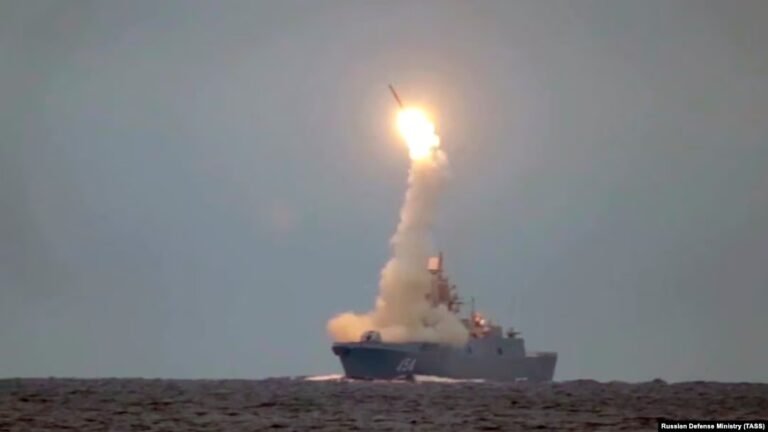Russia has carried out a hypersonic missile test close to NATO’s northern frontier, intensifying concerns over regional security. The launch involved a 3M22 Zircon missile fired from the Admiral Golovko frigate during large-scale military exercises linked to Zapad 2025.
According to official reports, the missile was launched in the Barents Sea, an area already under close observation by NATO forces due to its strategic proximity to member states. The Zircon, known for its speed and maneuverability, is considered one of Russia’s most advanced weapons. It can reportedly travel at up to nine times the speed of sound, making interception extremely difficult.
The event was recorded and shared on Telegram by Russian state-linked channels, showcasing the missile’s trajectory as part of what Moscow framed as a demonstration of its defense capabilities. While Russian officials described the test as a routine part of scheduled exercises, the timing and location have drawn international attention.
The Zapad 2025 drills are being conducted jointly with Belarus and involve land, sea, and air operations. Analysts suggest that the exercises are meant not only to train forces but also to send a strategic message to NATO. The inclusion of hypersonic weapons in the drills underlines Moscow’s intent to highlight technological advancements and deterrence capability.
NATO has yet to issue a formal response, but defense experts across Europe say the test is likely to escalate already heightened tensions. The Barents Sea, near Norway and other NATO territories, has long been a sensitive zone where Russian and Western militaries monitor one another closely.
Security analysts point out that the Zircon’s deployment in drills so close to NATO territory demonstrates both confidence and risk. While Moscow insists that the weapons are for defensive purposes, neighboring countries see the move as provocative. The test underscores the strategic challenge NATO faces in countering new-generation weapons designed to evade existing defense systems.
This is not the first time Russia has showcased hypersonic missile technology, but conducting the test within the framework of Zapad 2025 adds to its geopolitical significance. Military observers believe the event is aimed at signaling strength in the face of ongoing Western support for Ukraine and increasing defense coordination among NATO allies.
The Zircon missile, developed as part of Russia’s next-generation arsenal, is designed for naval deployment, giving Russian warships the ability to strike targets at great distances with unprecedented speed. Its development has been touted by President Vladimir Putin as a game-changing capability that ensures Russia maintains military parity with Western powers.
For NATO, the test raises questions about future defense planning. Hypersonic weapons present a new layer of challenge, as current missile defense systems are largely ineffective against their velocity and maneuverability. The Barents Sea launch serves as a reminder of the shifting balance in military technology.
As Zapad 2025 continues, further demonstrations of advanced weaponry are expected. While Moscow insists the exercises are transparent and defensive, the proximity of hypersonic missile testing to NATO borders highlights the fragile nature of security in the region.
With tensions already strained, the latest Russia hypersonic missile test reinforces fears of miscalculation or escalation between Moscow and the West. Analysts warn that each demonstration of advanced weaponry adds pressure to an already volatile geopolitical environment.







